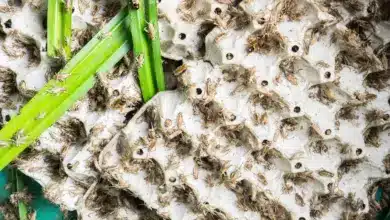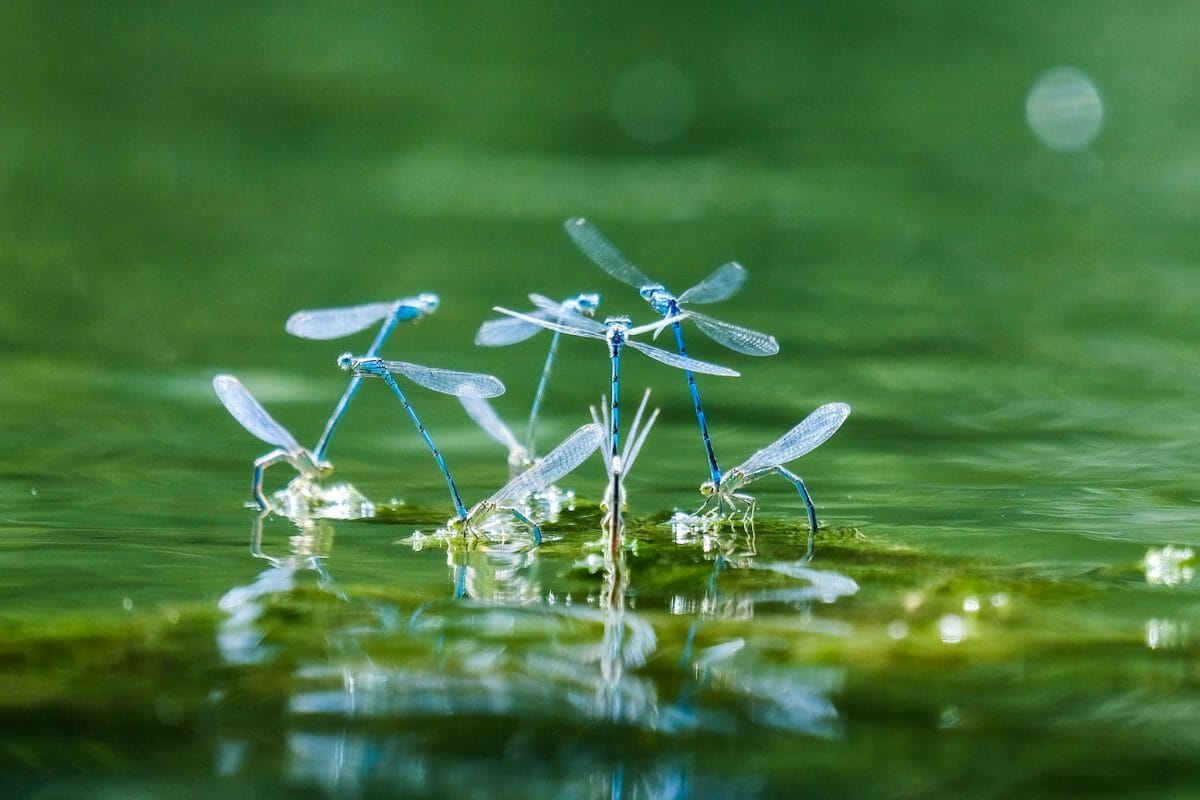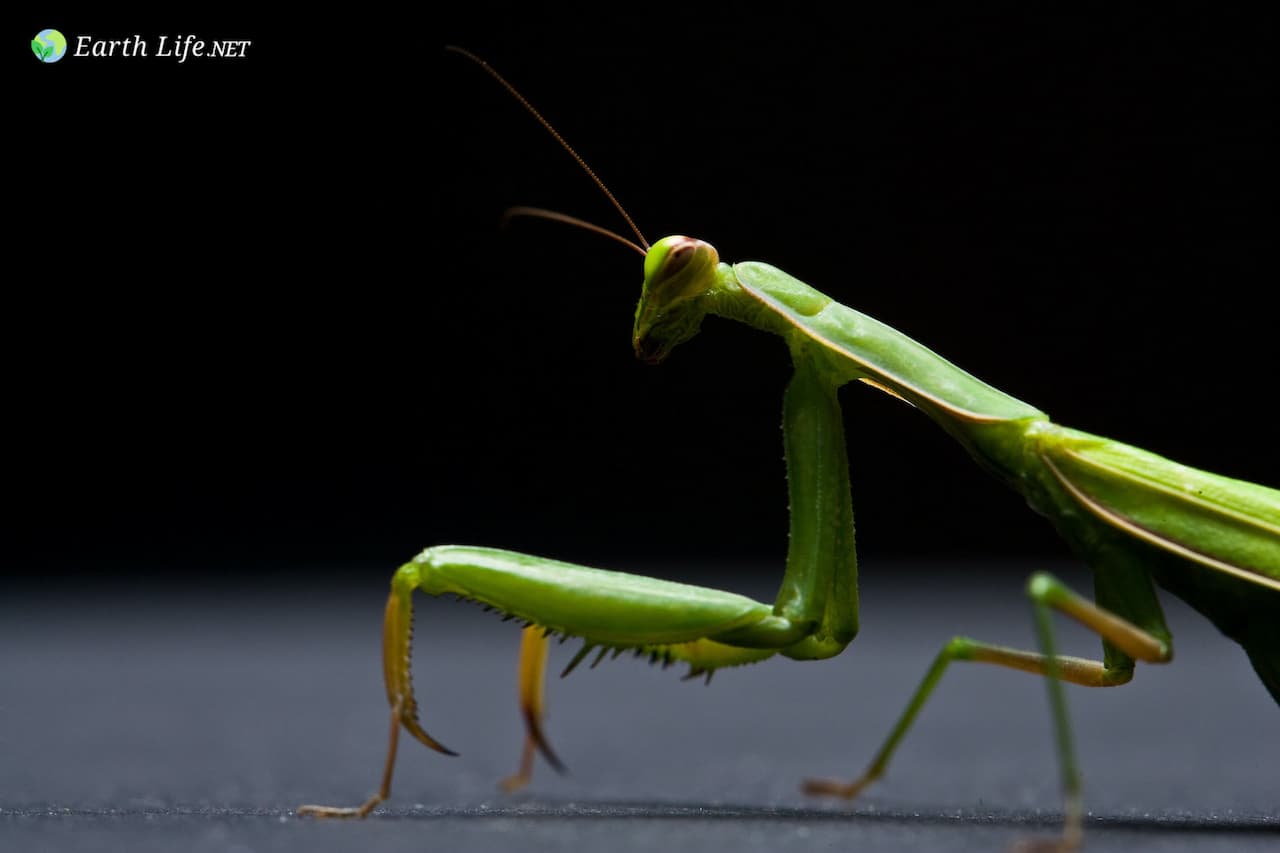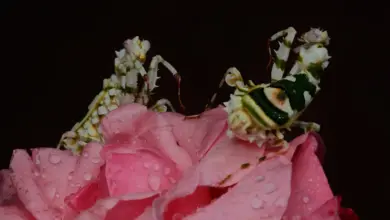How Far Can Insects See: Do They Have Good Eyesight?
[modified-date]
[social-share]
An insect’s vision is its main tool of navigation and orientation. How well and how far an can insect seen hugely depends on the species and its unique evolutionary adaptation.
We once thought insects could not focus on detail and see a blurry, low-resolution image of the world. However, recent studies show that insect vision is much more complex, with adaptations still to be described and discovered.
Let’s try and see how insects perceive the world around them – and how good their vision is.
While it is challenging to tell how far insects can exactly see, scientists proved a long time ago that they have stereoscopic vision and depth perception – meaning they can see into the distance. Their visual range is considered to be less than 100 feet. However, in a broader sense, we shouldn’t forget that many insects orient themselves by the Moon and the stars – millions of miles away.
How Do Insects See?
Insects have compound eye, made out of hundreds or even thousands of tiny ocelli – single lenses that create a compound mosaic-like picture.
The version of insect vision that we see in popular culture – the dozens of tiny repeating images – is incorrect. Insects perceive a realistic number of objects – not double, not ten-fold. However, the picture is made up of small image pieces.
Do Insects Have Good Eyesight?
For a long time, due to the different anatomy of an insect, we thought insect eyes were not complex enough to provide a clear picture rich in fine detail. In fact, if a butterfly had to apply for, e.g., a driver’s license, it would be declared legally blind by our standards.
By theory, insect vision is poor because their eye lenses are immobile, so they can’t fine-tune their focus and can’t see fine details. Their resolution was thought to be 100 times worse than the human eye. Imagine a monitor with pixels the size of a redcurrant berry. That’s the level of detail insects can see.
Related articles:
- The insect heart: a complete guide
- Insect nervous system do they have?
- How many wings do insects have?
- What organs do insects have?
- Do insects have a backbone?
However, recent studies have shown that while lenses are indeed fixed, the photoreceptors underneath them are movable – and can move fast. With their fast eye movements, they automatically go in and out of focus as the insects scan the environment.
The catch is that this light-sensor twitch is so rapid that our naked eye cannot detect it. Ironically, our limitations used to inhibit our ability to realize that insect vision is much more advanced than we thought!
Insect Vision Special Features
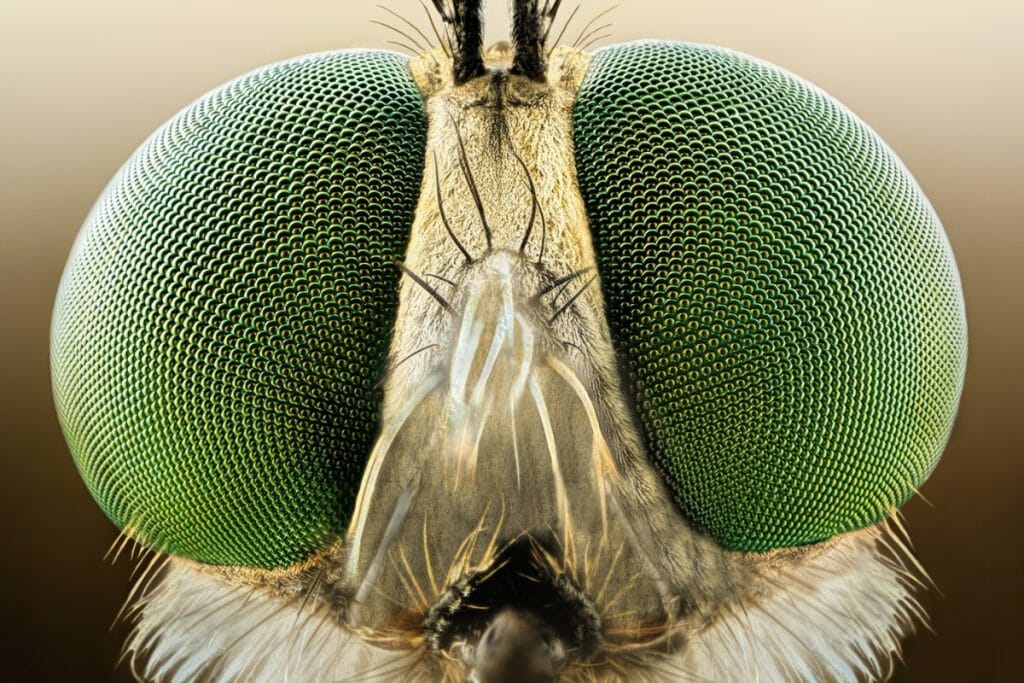
Extreme sharp and detailed macro of robber fly
Despite the lessened detail quality, insect eye have certain visual superpowers that humans lack. True, on visual pigment, they can’t see the red part of the visible spectrum, but they can see ultraviolet light that is invisible to us – meaning that their version of the world is differently colored.
Interestingly, flowers have certain pigments that become visible under UV light only. These are the features that help pollinators differentiate and choose between the flowers.
So how can flying insects avoid constantly bumping into things? They are quite skillful in air maneuvers, right?
Vision is a complex phenomenon. When studying vision, we can divide it into subcategories, such as:
- Color vision
- Depth perception
- Polarisation vision
- Motion vision
Depending on their biology (traits) and ecology (behavior and lifestyle), insects have differently developed and fine-tuned their vision with variations in these subcategories.
Do Insects Have Depth Perception?
The ability to “see far” is called depth perception. In simple terms, it is the ability to perceive three-dimensional space.
Binocularity (having a pair of eyes) is the main precursor to the ability to perceive depth. It is well known that humans who lose an eye lose their stereoscopic vision – and their depth perception with it.
Did you Know?
Insects do have two compound eyes, but for a while, there wasn’t enough evidence to claim they indeed perceive depth.
However, at some point, researchers noticed that predatory insects that are active hunters (namely, dragonfly larvae, praying mantids, tiger beetles, and water scorpions) without one eye could not catch their prey efficiently anymore. Further studies confirmed that mantids use the so-called “binocular triangulation” to estimate their prey’s distance.
What Is The Farthest Insects Can See?
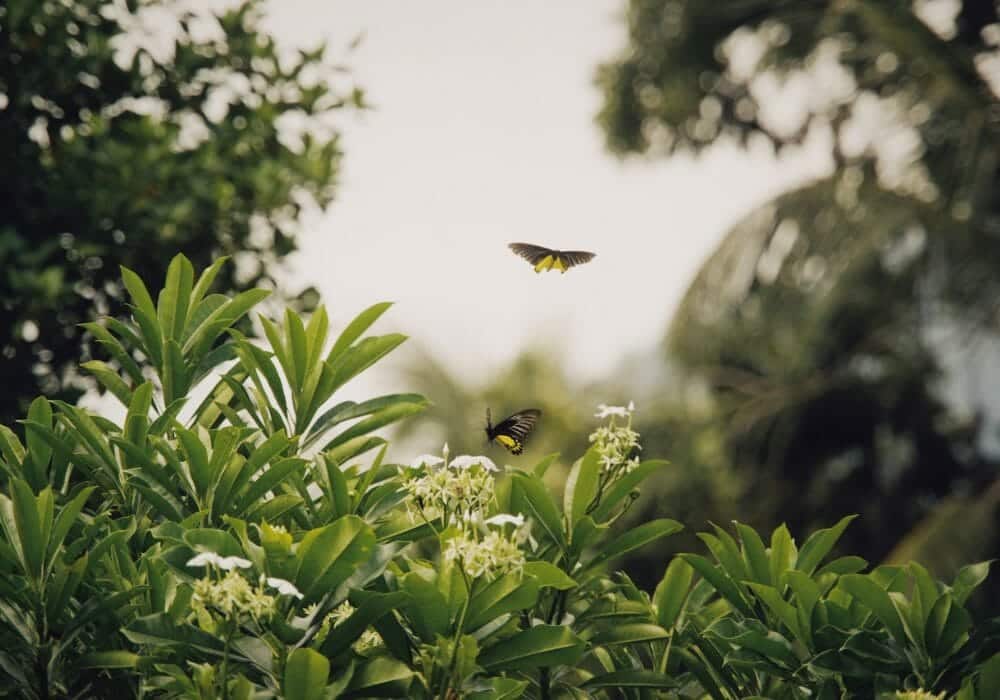
Estimating how far insects can see for every order and family would be a bit of a wild guess. Available resources claim that the range is 100 feet, tops – but that’s likely a rough estimation.
However, there’s one clever take on it (and perhaps a bit poetic too). Many nocturnal insects orient themselves by a dim light provided by the stars and the Moon. These celestial bodies are millions of miles away. If we look at the matter this way, it turns out that insect eyes can see further than 100 feet!
Surely, they don’t have an internal telescope and can see the surface of the Moon – but the fact that they actively use distant lights to orient themselves is correct.
Conclusion
Although we’ve been studying insect vision for a couple of hundred years, we are only now beginning to figure out how advanced their visual apparatus actually is. It all makes sense, considering how well they fly and orient themselves in the hectic environment – it’s just that we haven’t had physical proof.
We have come a long way from thinking that insects’ large eyes see hundreds of repeating images that are slow and unclear to realizing that they have movable photoreceptor cells that automatically focus on moving objects.
That is why I’m sure that we will learn much more about their depth of perception in the following years and challenge the current beliefs.
References
Studies
- Borst, A (2009). Drosophila’s View on Insect Vision, Current Biology, Volume 19, Issue 1,2009, P. R36-R47,
https://doi.org/10.1016/j.cub.2008.11.001 - Dafni, A., Lehrer, M., & Kevan, P. (1997). Spatial Flower Parameters And Insect Spatial Vision. Biological Reviews, 72(2), 239-282. doi:10.1017/S0006323196005002
- Rossel, S. Binocular stereopsis in an insect. Nature 302, 821–822 (1983). https://doi.org/10.1038/302821a0
- Schwegmann, A. et al. (2014) Depth information in natural environments derived from optic flow by insect motion detection system: a model analysis. Front. Comput. Neurosci., 01 August 2014
Articles
- Insects can see the world in much finer resolution than previously thought. The University of Sheffield. 5 September 2017
https://www.sheffield.ac.uk/news/nr/insects-can-see-better-than-scientists-thought-1.727290 - Do Insects Really See Hundreds of Tiny Identical Images? Butterflies are legally blind. Arizona State University
https://askabiologist.asu.edu/content/bugvision-hollywood-misconception
Disclaimer
Earthlife.net does not provide medical advice. We do our best to help users understand the science behind living beings; however, the content in the articles and on the website is not intended to substitute for consultation with a qualified expert. By interacting with the website and/or our email service, you agree to our disclaimer. Remember that you must consult a specialist before using any of the products or advice on the web.


